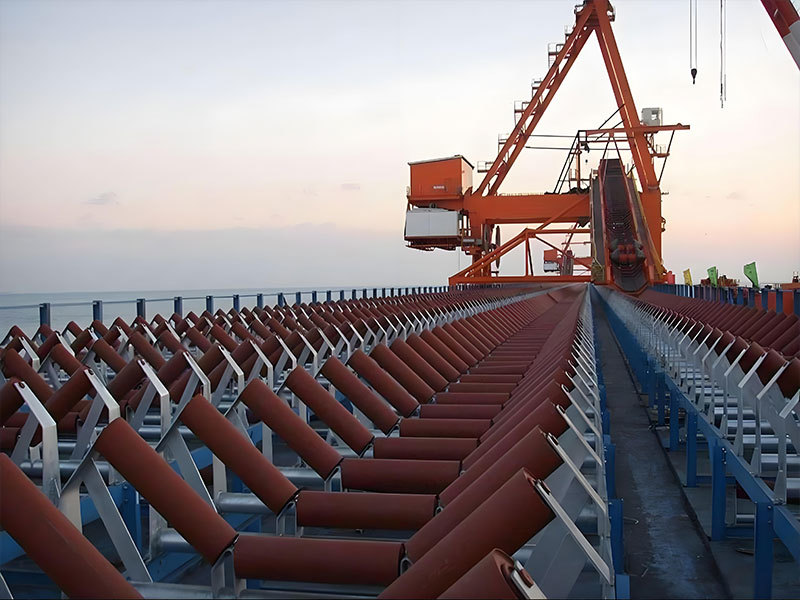The use and characteristics of trough-shaped roller sets.
24/12/23 11:38

The trough roller group is an important component of the belt conveyor, with many types and a large quantity. It accounts for 35% of the total cost of a belt conveyor and bears more than 70% of the resistance, so the quality of the rollers is particularly important.
The role of the roller is to support the weight of the conveyor belt and materials. The roller operates flexibly, reducing the friction between the conveyor belt and the roller, which plays a key role in the lifespan of the conveyor belt, which accounts for more than 25% of the total cost of the conveyor. Although the roller is a relatively small component in the belt conveyor and its structure is not complex, manufacturing the roller is not an easy task.
The impact of radial runout on the belt conveyor:
Within the specified range of runout, the belt conveyor can operate smoothly; otherwise, it will cause the belt conveyor to resonate and bounce, leading to material spillage and environmental pollution. The benefits of a smaller radial runout become more apparent at higher belt speeds. The standard in China specifies a value of 0.7 mm, while the Japanese JIS standard specifies a value of 0.5 mm.
To improve the support stiffness of the trough roller group, a calculation formula for the cross-sectional area of the material was derived, and the static load of the trough roller group was calculated. Based on this, a finite element analysis was conducted to obtain the stress distribution and deformation state of the roller structure. Using the inclination angle λ of the side roller axis as a design parameter, the FFE algorithm was employed to optimize the support stiffness of the trough roller group. The optimization result increased λ to 22.3°, while the large deformation of the trough roller group was reduced by 20.46%, enhancing its support stiffness and providing important reference and basis for the structural design of the belt conveyor roller.
Characteristics of the trough roller group:
1. The trough roller has corrosion resistance: it is not affected by acids, alkalis, or salts.
2. The trough roller has strong hardness: it is robust.
3. Good sealing: the trough roller is fully sealed, with plastic labyrinth seals at both ends, preventing oil and grease leakage, allowing the rolling shaft to operate for a long time; the trough roller operates in a fully sealed state.
4. Ceramic surface of the trough roller: forms an oxide film, has a smooth surface, does not adhere to materials, and has a low friction coefficient with the conveyor belt, reducing the hoisting drive force.
5. Long service life of the trough roller: the trough roller lasts 2-5 times longer than steel rollers, reduces belt wear, prevents the belt from running off, and extends the lifespan of the belt.
6. Low operating costs: the trough roller can reduce the overall cost of the belt conveyor and decrease maintenance hours.
Previous Page:
Next page:
Related News
Unlocking Efficiency: The Advantages of Customized Three-Roll Idlers for Your Operations
Unlocking Efficiency: The Advantages of Customized Three-Roll Idlers for Your Operations Table of Contents Introduction to Three-Roll Idlers What Are Three-Roll Idlers? The Benefits of Customization Enhanced Performance Through Tailored Solutions Application of Customized Three-Roll Idlers in Various Industries Improving Material Handling Efficiency Maintenance and Durability Consid
Understanding the Importance of Customized Troughing Idler Sets in Material Handling
When it comes to material handling, the efficiency of conveyor systems is paramount. One essential component that significantly impacts this efficiency is the troughing idler set. Customized troughing idler sets are specifically designed to meet the unique requirements of different materials and operational conditions. Understanding their role and advantages can help industries optimize their proc







